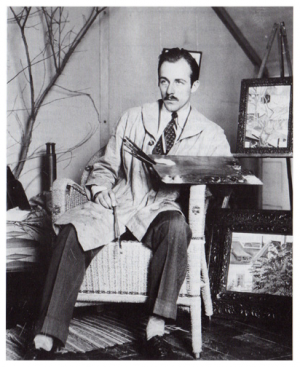Ernest Caven Atkins
Caven Atkins was born in London, Ontario, in 1907 and raised in Manitoba and Saskatchewan. From 1925 to 1928, he honed his skills under Lionel LeMoine FitzGerald at the Winnipeg School of Art and the University of Toronto. FitzGerald, a later member of the Group of Seven, had a profound impact on Atkins' artistic development.
Atkins began his career at a commercial art firm, where he met Charles Comfort, another renowned Canadian artist. This period marked his introduction to German expressionism, which, along with the Group of Seven, greatly influenced his work.
During World War II, Atkins was commissioned to create a series of paintings and drawings at the Toronto Shipbuilding Company, focusing on the gritty reality of construction workers, welders, and bulkhead grinders. Twenty-four of these works were donated to the National Gallery of Canada.
Post-war, Atkins worked as an illustrator and designer for the Ford Company in Michigan until his retirement. He actively exhibited with the Manitoba Society of Artists, the Canadian Society of Painters in Watercolour, and the Canadian Group of Painters. Additionally, he served as President of both the Canadian Society of Graphic Art and the Canadian Society of Painters in Watercolour.
Caven Atkins passed away in 2000, leaving behind a legacy of contributions to Canadian art influenced by German expressionism and the Group of Seven.

Exceptional Sales
Abstract Buildings
- Graphite and Crayon on Paper
- 9 x 11 in
- 1932
- Sold
Are you considering selling your historical works?
We offer a viable and safe alternative to auction houses, eliminating the risk of devaluation when a work publicly fails to sell. We have no hidden fees and our transactions are dealt with the utmost discretion.

